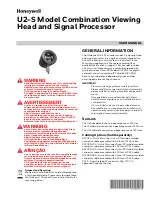
Chapter 10 Built-in PID Functions
10 - 10
The PID instruction uses part of the K device to perform operation. When the PID function is not used, the K
device can be used as a general Keep Relay.
The area of K0000 ~ K0999 is not used by the PID function so as to guarantee compatability with previous PLC
models and secure the user’s area.
K10000 ~ K1023F is the common bit area for all PID loops. The bit states and settings of the loops are
collectively arranged in the front part of the PID area. Thirty two - the maximum number of loops that can be
used by the PID function - bits comprise a double word and the states and settings of each loop are stored in
each bit order. But the loop number is represented in hexadecimal form.
K1024 ~ K1055 is the individual data area for PID Loop 0, where the settings and states of Loop 0 are stored. In
this area are stored the settings for PID Loop 0 (SV, dPV_max, MV_man, T_s, Kp, Ti, Td, MV_max, MV_min,
dMV_max) and, while the PID function is performed, the states for PID Loop 0 (PV, ETC, MV, MV_rvs, ERR,
MVp, Mvi, MVd, PV). By writing data into the set memory area, the user can change the PID setting at any time
even during operation and obtain the corresponding results in the next cycle.
K1056 ~ K2047 is the memory part of Loops 1 ~ 31 that are in the same form as Loop 0. Each loop operates
independently. If the user wants a dependent operation such as application of cascade, then he must do some
work to connect the states and settings of the loop.
In addition, please refer to the K device memory configuration in the latter part of this manual for an
understanding of the accurate memory location of PID.
For performance improvement of the product, the location and order of the memory area is subject to change
without prior notice.
Note
1) PID Memory Description Format
_PIDn_MAN n : Loop number
Ex) _PID10_MAN : Means MAN of Loop 10.
2) Common Bit Area
Ex) (25) = (19h) = K10059 : PID25_REV bit of Loop 25
3) Individual Data Area
Ex) K1024+ (32*1) = K1056 : SV of Loop 1
















































